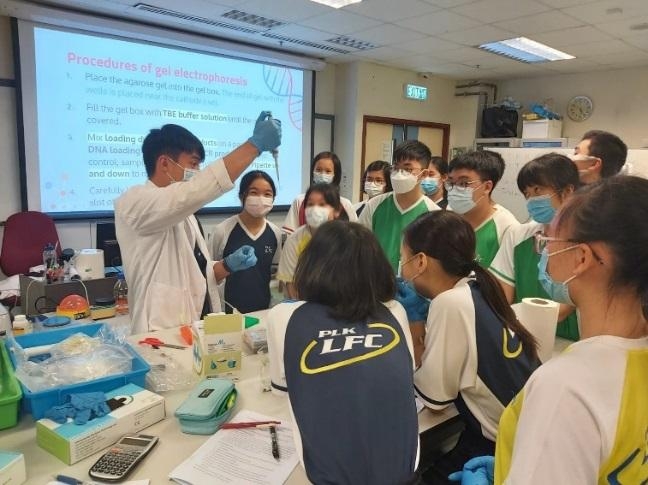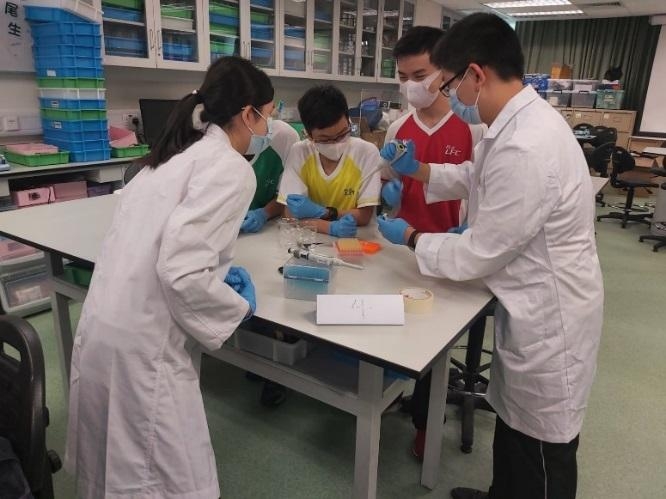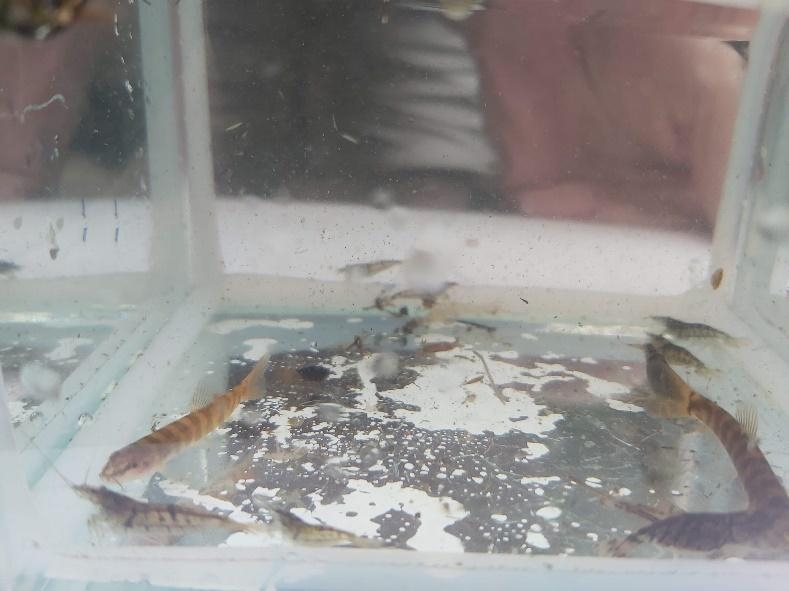Environmental DNA (eDNA) is DNA collected from environmental samples such as seawater or soil. Those DNA come from feces, hair, skin and other animal tissues. Since DNA contains genetic codes that are unique between each species, scientists could identify the existence of a certain species in the environment by analyzing eDNA (1). With the advancement of technology, eDNA analysis become popular for conducting ecological studies, such as monitoring the distribution of a species and assessing biodiversity.
To develop eDNA-based learning activities, our school collaborated with Dr. Cheang Chi Chiu from the Education University of Hong Kong, an expert in the field of eDNA. Dr. Cheang and researchers from his laboratory helped us to construct a series of after-school activities for enriching students’ knowledge in biotechnology.
In mid-October 2021, 178 of our S3 students participated in two ZOOM lectures hosted by Dr. Cheang’s team. The first lecture provided students a brief introduction to the valuable ecosystem in Hong Kong, while the second lecture explained the molecular technique underlying the eDNA technology. Following the lectures, 16 of our S3 students were selected to visit the laboratory in EdUHK and conduct hands-on eDNA experiments. They analyzed some eDNA samples by applying different molecular biology techniques, including polymerase chain reaction and DNA agarose gel electrophoresis. At the end, Dr. Cheang gave our students a short lecture to highlight the increasing importance of biotechnology in everyday lives and encouraged our students to further develop their interest in biotechnology. After the series of activities, some students started their own eDNA project on studying the distribution of Macropodus hongkongensis, which is a local threatened freshwater species in Hong Kong (2).
Our experience demonstrated that eDNA study is not merely atool in scientific research, but it is also an excellent tool for science education in secondary schools. Since eDNA study involves knowledge in ecology, molecular biology and even bioinformatics, it could let students experience modern science problem with an interdisciplinary perspective. Besides, it is also an excellent discovery-based science activity to foster students’ curiosity and nurture their scientific literacy. Proper environmental values and attitudes could also be nurtured by connecting biotechnology to the land and waters around us.
- Kelly, R. P., Port, J. A., Yamahara, K. M., Martone, R. G., Lowell, N., Thomsen, P. F., Mach, M. E., Bennett, M., Prahler, E., Caldwell, M. R., & Crowder, L. B. (2014). Environmental monitoring. Harnessing DNA to improve environmental management. Science (New York, N.Y.), 344(6191), 1455–1456. https://doi.org/10.1126/science.1251156
- Liu, H., Xu, N., Yang, J., Zhang, Q., Zuo, K., & Lv, F. (2019). The complete mitogenome of Hong Kong paradise fish (Macropodus hongkongensis), an endemic freshwater fish in South China. Mitochondrial DNA. Part B, Resources, 4(2), 2849–2850. https://doi.org/10.1080/23802359.2019.1660271






